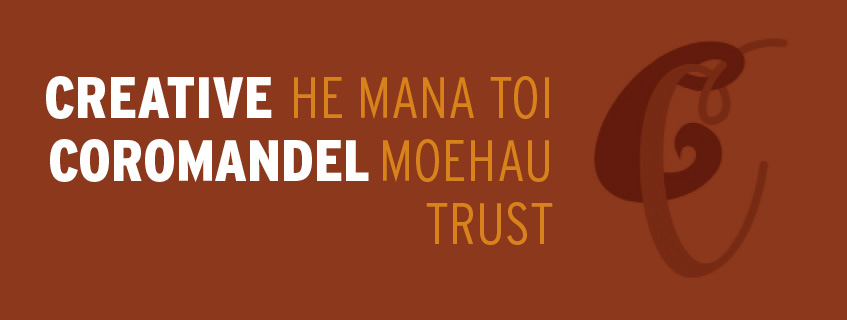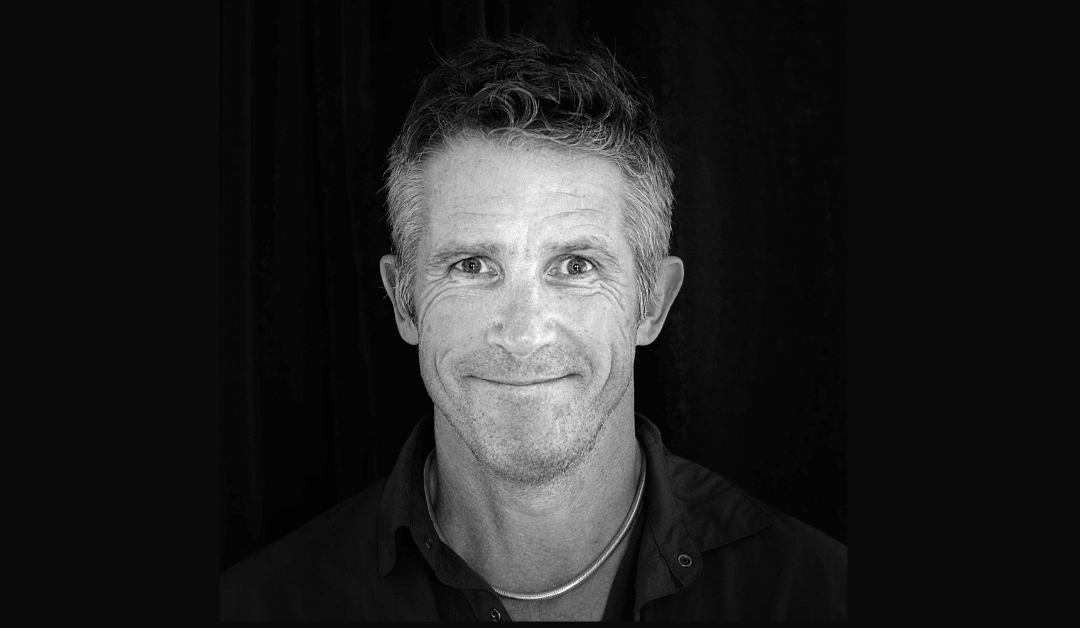Lens, Pens, Paper is an exhibition of the works of local artists Ian Preece, Roimata Taimana and Phillip Fickling. Three perspectives exploring themes of our unique culture, natural environment, history and spirituality and the stories and myths that connect us from the earth to the stars. Art forms include photography on various media, ink, paint, digital art and paper sculpture.
Tell us a bit about Ian Preece (photographer)
Before I took up photography, I was always interested in the outdoors, which led me into my first career as a geologist. I worked around the world, often in remote places, and I just loved the outdoors. I was born in industrial Merseyside, there wasn’t a lot of green around – well, perhaps the pollution in the rivers and that was about it. That fascination with the outdoors led me into wanting to photograph and capture images. It was a drive which is still there: you see something that you connect with emotionally – a scene, a place, a forest, an animal. If you can capture an image that can evoke the feeling that you had, and then revisit it later. From there, it extended into thinking, well, if I can take images that are meaningful for me, other people might like to see them as well.
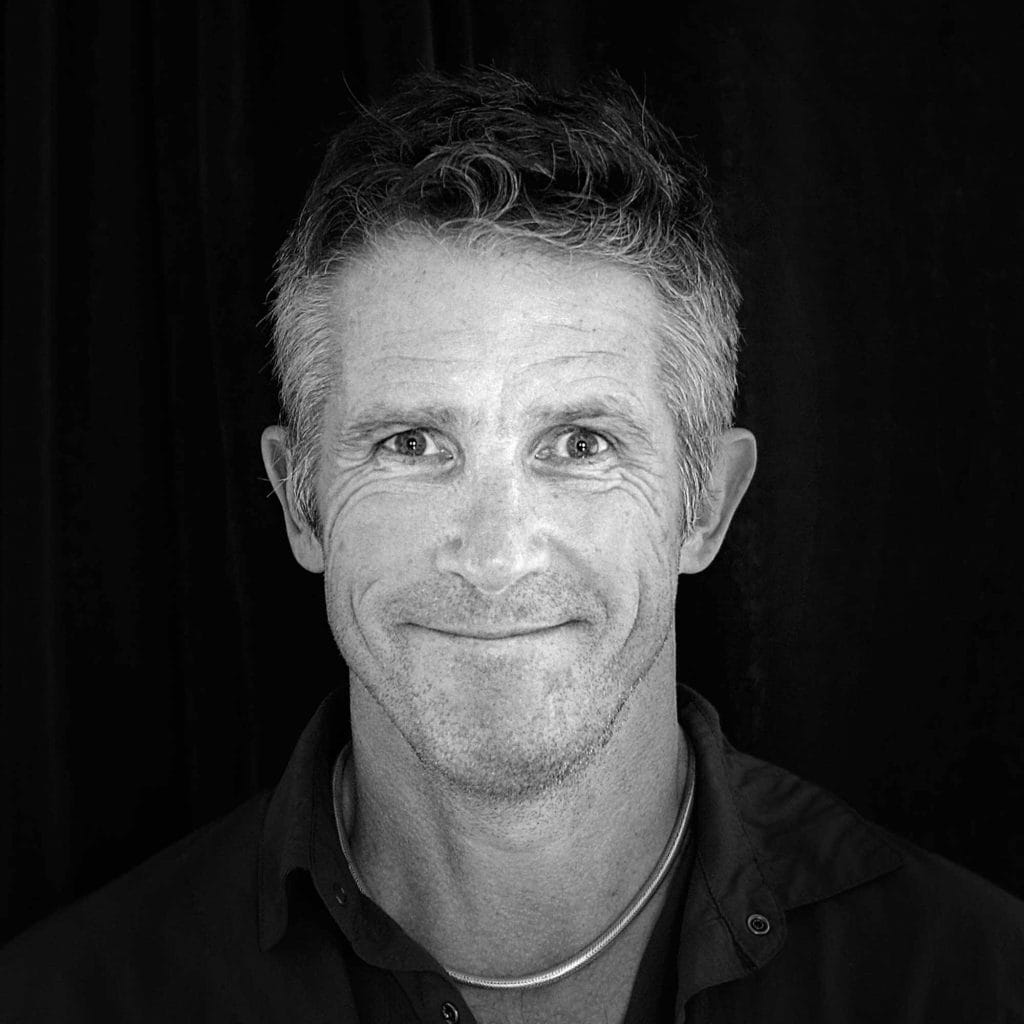
What was your first shot?
I got my first camera at about eight years old. I was nagging my mum to get me one and a Kodak Instamatic duly arrived for my birthday. My first picture was of an Alsatian in our local park. I remember this immense sense of disappointment when I got the image back. It was unimaginative and uninspiring. I’m surprised that I didn’t give up at that point.
It was interesting to me because it reminded me of the reason that I wanted to take pictures. It’s still the reason that I want to do it. We all exist within our own heads. It’s about forming connections. If you can capture an image of the outside world that has an emotional meaning, it’s more than just a record. I think it’s the same for painters, sculptors, musicians – it’s about connecting. I think if I went back now and photographed an Alsatian hopefully it would at least look like a dog.
Can we see some pet portraits in your future?
Absolutely not.
When was your first exhibition?
About eleven years ago in the UK. My photographic career started in India. I was trekking and ended up working for a guy who ran the trekking company – I became his photographer and received free treks for about three years, which was fantastic! I developed this body of work through my trips in the Himalayas, Rajasthan, Nepal, Kashmir, and so on.
Later I ended up working in Leamington Spa. There was an Arts Collective in the town that owned a professional art gallery. I thought it looked great so asked I could put some work on there. My first exhibition, which was the biggest I’ve ever done, I put up 70 pieces! Luckily, the guys from the Collective were very helpful, one of them had a whole career in print and art and in the art industry. I learned a lot from him about printing, exhibiting, and hanging.
They helped me frame my work the night before the exhibition. I went in, and I had to sign all the images. My handwriting’s shocking. You’d think I’ve been writing by hand my entire life I would be good at it by now, but it’s just gotten worse. I was signing my name on these pieces and there was this ominous silence, and Jerry, who was the curator, was looking down at me, horrified. It was like – is that the best you can do? Luckily the exhibition was really well-received and I decided to carry on.
It is definitely my creative outlet. I think everybody’s got one, it’s just working out what it is. I don’t have the skills with a pen or a pencil or a brush like the guys I’m exhibiting with – Roimata and Phil. It’s one of the things that is so special about the exhibition [Lens Pens Paper] – we have completely different skill sets. I cannot do what they do. The camera is my thing.
My first exhibition was solo and focused on my India work with a cultural focus. I followed this with more the landscape and mountain photography. This was a collaboration with an Irish painter who was a pointillist [a technique of painting in small patterns of dots]. He did stripped-down landscape images that were beautiful. We used the same subject, but quite different media. That was an early experience of how collaborations can work for everybody: for the artists and for the public. It’s nice if there’s a connected theme and you’ve got a different media. I enjoy seeing how other artists interpret things and what they do with it.
Where did you study photography?
After my first exhibition, I took things further. I was accredited by the Royal Photographic Society and started studying formal qualifications. I enjoyed the practical courses, but got less from the classroom. I felt I wanted to teach. My first photography workshop was in the Himalayas, which went well. After that I ended up going back to the UK and started working on contract as a project manager. There’s art and there’s money, often they don’t connect.
How did you end up in New Zealand?
The New Zealand thing was part of us wanting to be somewhere natural with more space. We first came in the late 90s. My photography was developing, and it seemed a natural confluence to do it here, which has led to what I like to do: I take images, I exhibit work, I collaborate with people. I also like to teach and run workshops.
I take pictures of the things and places I connect with and I exhibit the work so I can share it with people. I’ve got a good sales record which is nice but even if people don’t buy my work, it doesn’t matter. It’s about the connection. I love exhibiting and with the lockdowns, I haven’t been able to. It’s a really nice thing to be able to have our work out again, and it’s been received really well by the public which is great.
Since the lockdowns, my workshops have picked up again. I finished one out in Great Barrier recently, which is a relatively new location. I’ve another one in Great Barrier later this year as well as one in Tiritiri Matangi.
How did you come up with the idea for Lens Pens Paper?
When I first saw the Driving Creek Gallery, I thought what an amazing location and wanted to exhibit there. The Coromandel is lacking in public spaces to hang work. It’s a purpose-built space to exhibit and has really good lighting – especially the natural light.
The collaboration developed from seeing fellow artists Roimata and Phil who I really admired and who had a clear contrast in style but a similar feel for telling a story. It is inspiring to see what they do – more than seeing another photographer in some ways. It’s fascinating to me to see what other artists see and create. With Roi, I just love his work – I love the creation, I love the fact that he’s influenced by his culture, his religion, his spirituality. He creates amazing pictures that have so much in them.
Then I got to know Phil, Phil Fickling, because he was in the 10 Artists. He is another storyteller. Phil’s got this unbelievable imagination – plus technical ability to create these detailed models. Every model has a story. They’re all built around a story or a fable or a metaphor. This is fascinating to me – his imagination and execution are at a level I couldn’t match.
It dawned on me that the three of us are storytellers in our own way, but very different. I like to theme exhibitions – even conceptually, not just a matter of subject. The name must be credited to Isabel Gilbert Palmer from Kūaotunu. She does amazing work and is a real creative force. Isabel said, that’s far too complicated – call it Pens and Paper. Then Phil said, you’ve got to keep it short, which is true, it’s got to be a punchy name if I’m involved with design. He is a great designer. And it’s working.
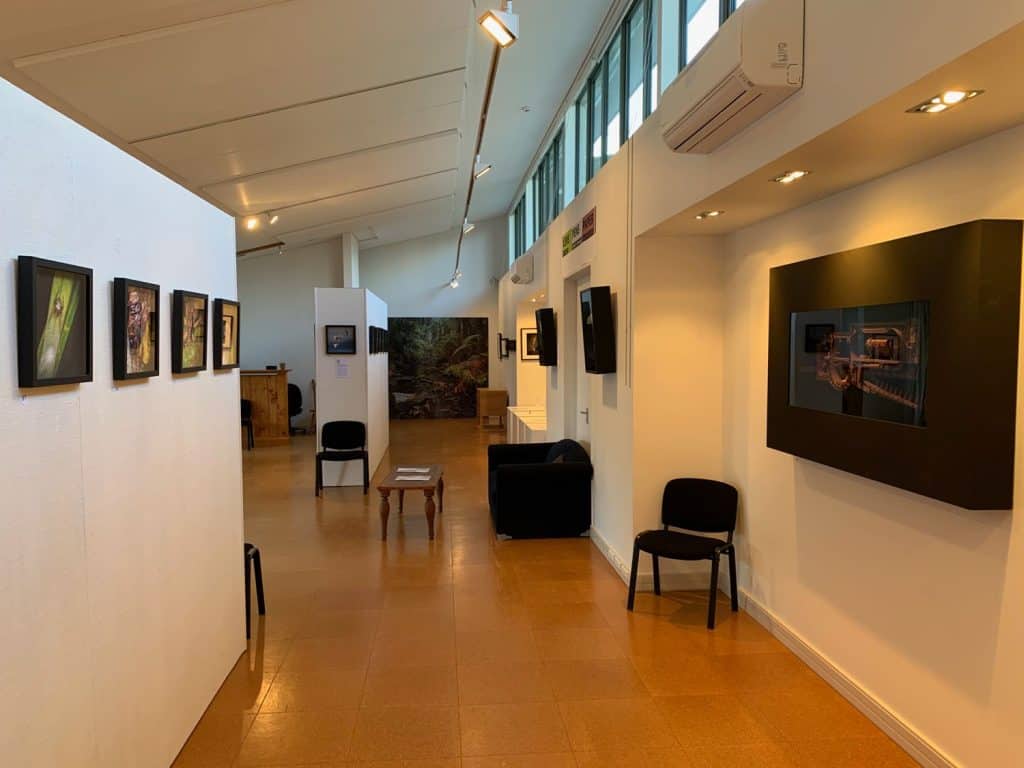
How’s the response been to Lens Pens Paper?
I’ve been amazed by the response. The concept has really connected with people. For me, coming back to the original idea of what I thought I was trying to achieve is perfect. The three of us, with our three different media, three different outputs, but we’re all seeing, interpreting and creating things that tell us something about the world that we live in.
I received a genuinely nice email from John Eaglen, which was nice because he has a lot of experience of art.
A lady came in with some friends yesterday – it’s her third time this week, which was nice.
One lady came in who used to work at Auckland Zoo. She knew a lot about small invertebrates and the small insects, and part of what I’ve got on show is the macro work. We had a lengthy conversation about the creatures she is familiar with – things like the periaptus, which not a lot of people know about. Some of the things I’ve got on display are rare. She appreciated seeing the pictures from a different point of her world.
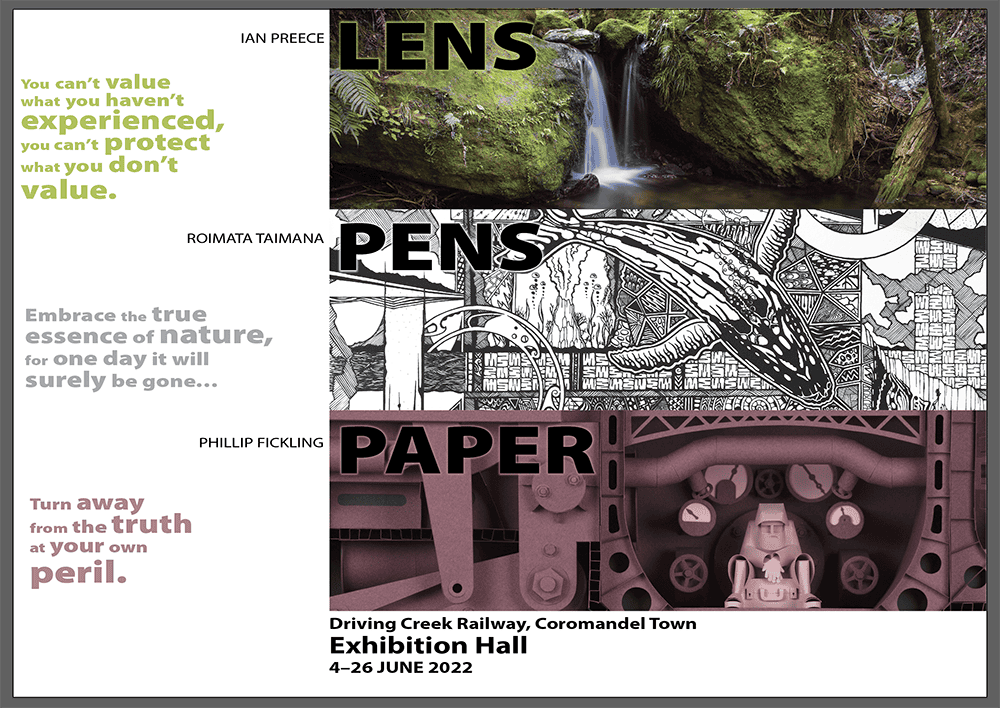
Tell us more about macro photography
It’s when you can see things through the camera that you can’t see with the eyes. You can see the tiniest details of patterns on the spider or weta leg. I’ve got a shot of the crane fly, which is amazing – the colours are iridescent blues, you can see the two stabilisers – I can’t see things like that. It was a real meaningful connection with the biologist from Auckland Zoo.
At the opposite end of the scale it’s the same as photographing the Milky Way. The scale and colour of the myriad stars in the sky. More than you can see with the naked eye.
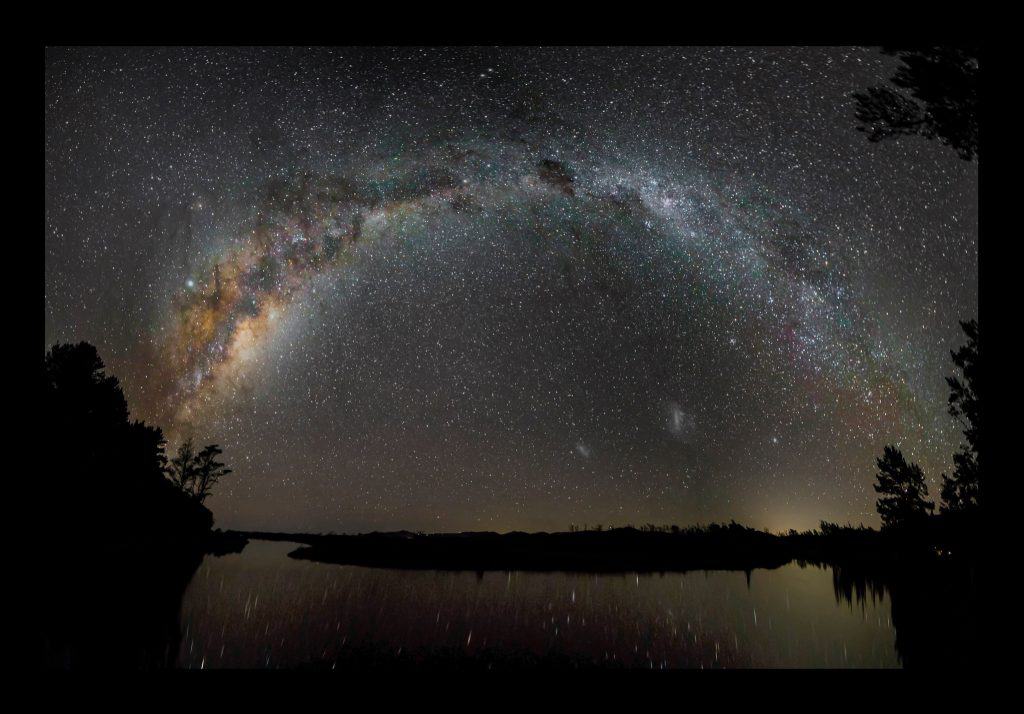
How do you prepare for a collaboration like this?
We’ve been lucky. We’ve already done a few things together, so we’ve got a team. As well as Roi and Phil we have our partners, Shirley, Carolyn and Jenny, who support us. Because we’ve done a lot of work together, we’ve got a bit of a bit of a rhythm.
Describe your style in three words…
When I teach, I talk to people about connecting with their work. Photographically – diverse? I like to capture different images of the things I see in diverse ways. Emotional? I photograph things that I respond to emotionally. It’s the way I communicate. Being very candid about it – I think it’s the best of me. I think it’s the thing I do that shows the side of who I am. Diverse. Emotional. Personal.
How important is the weather in terms of landscape photography?
Hugely. It influences light so it can influence location. If you’re doing beach shots, it depends on the tide, the wind and the waves: is it a sandy beach? A rocky beach? It all influences your choice of location. If it’s cloudy, some places work better than others. Direct light works because of colour and having been a geologist, the colour the rock makes a big difference. If it’s going to be a bright morning, some places work better than others. If it’s going to be a cloudy morning other places work better because it’s more about the textures of the earth, but also cloud gives colour. At sunset and sunrise, you get light reflected in clouds – it creates colour. The other thing – if it’s going to be cloudy, even raining – head to the forest. It’s the best time to photograph if it’s clouding over and it’s misty, I head to the forests every time. The light is softer, you don’t get such harsh contrast. The leaves on the trees are fuller – they’ve absorbed the water.

Do you need your own equipment for an Ian Preece Photography workshop?
I can provide equipment. In fact, I recently upgraded one of cameras – I was still using my original digital camera, which I bought 13 years ago. I just got one of Canon’s entry level full frames. I’m a partner with Canon so I got a discount and it’s an amazing camera. I had a couple of people coming in who didn’t own cameras and let them use it. I use it myself now.
I’ve got lenses, too which gives people a chance to use ones they wouldn’t normally use. For photographing water and clouds, you need to use filters, which are things that you use to regulate light coming into the camera, so you can have different shutter speeds – filters are essential. I’ll let people use filters and then they see what they can do that.
Can you teach a complete novice to take a decent photo?
Yes. I only say that because I’ve done it. I had a lady recently who was had taken some really nice images on her iPhone, and she wanted to see if it was worthwhile investing in a camera. It was a two-day workshop. Cameras are surprisingly simple – they’re made complicated by having too many features. You only need to know a few things – 99% of the features, you don’t need.
What are your passions outside of photography?
I love art. I love the natural environment. We’ve got a 50-acre block that we planted out with native trees – that means a lot to us. Other things, I trained as a chef years ago, not because I wanted to work in a kitchen – because it’s hard work – but I love cooking. In my old career, I had this stressful job. I launched a software company and it was tough – really tough, actually. I decided I wanted to do something else. I went off down to Christchurch and trained in French cuisine for three months. I’m a better cook, whether or not I’m a good cook… I do prefer doing photography workshops, I will host people in our house, and I do cook for them. I do make a good ice cream – a manuka honey and feijoa one and we get all the produce from the neighbours. I also do a really good double-chocolate ice cream.
